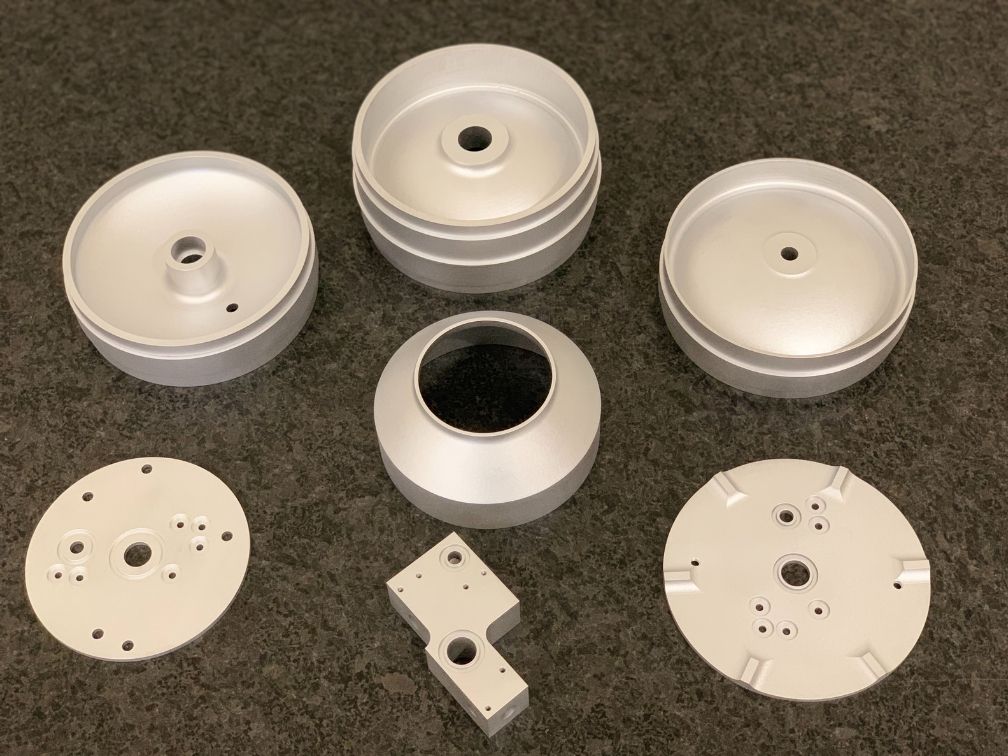Metal 3D Printing and Machining Produce High-Efficiency Rocket Designed by Stanford Students

The Stanford Student Space Initiative (SSI) is the largest student-run organization at the university. Since its inception, it has brought together students from a variety of disciplines to pursue their interest in space and has achieved several milestones to further space exploration.
The organization supports a variety initiatives that range from biology and high-altitude balloons to satellites and rocketry. One group of students is heading up a project solely dedicated to creating a liquid propellant rocket with the goal of setting the world record for altitude reached by a student-designed liquid propelled rocket, which currently stands at 13,000 ft.
While many liquid propelled rocket designs are focused on maximizing power and increasing scale through larger motors, the students at Stanford are taking a different approach. Through careful design and by leveraging digital manufacturing technologies they are focusing on reducing mass in order to create a high-efficiency rocket capable of not only breaking the 13,000 ft. record but with the ultimate goal of reaching an altitude of 30,000 ft.
In their pursuit for a lightweight, highly efficient rocket, the team first had to identify which areas had the most potential for weight reduction and evaluate new technologies to produce more complex geometries that would reduce mass.
Reducing Cost and Mass with Machined Aluminum Components
They began work on the new design by modifying the propellant tank endcaps. The previous endcap design was spherical and while it worked well, the team discovered that by changing it to be elliptical, they could reduce manufacturing costs and after some structural optimization reduce the mass of the component as well.
Another major design change was made to the propellant tanks. Normally a rocket will have two propellant tanks, but to save mass, they created what is called a common dome design. To do this, they completely redesigned the flow path between the tanks and pyrotechnic valve using custom parts with internal volumes. The common dome saved .3 pounds in weight, and while that may not sound like much, any reduction in weight correlates to a proportional increase in altitude (i.e. a 10-percent decrease in mass will result in a 10-percent increase in altitude). Each part was machined from 7075 aluminum, which was chosen for its excellent strength-to-weight ratio.
The team of students used the design analysis provided in each CNC machining quote to further optimize the geometry for the manufacturing process and find ways to save costs. Since the design feedback in each quote is automated, they could iterate more quickly and resume testing between design iterations as fast as possible.

Metal 3D Printing Enables Complex Fuel Injector Design
In addition to several machined components, the aerospace engineering students used metal 3D printing to manufacture the fuel injector. The previous injector design was machined but they chose to switch to 3D printing to eliminate seals, reduce mass, and achieve a higher efficiency design. To optimize the fuel injector’s geometry and reduce mass as much as possible, they built the injector around the fluid volumes instead of carving fluid volumes out of a block—which is what is typically done for machined parts.

Once they had a new injector design completed, the team worked with the applications engineering staff at Protolabs to make a few adjustments to ensure a high quality print. They added in a radius to maximize the overhang angle within the internal channels and groove for the o-ring seal. The team also increased the orifice size from 0.016 in. to 0.020 in. for better feature resolution. The orifice holes were then machined out to remove any remaining material before assembly.
Working with Protolabs’ direct metal laser sintering process they were also able to reduce the part’s wall thickness from 0.050 in. to 0.020 in. Since the fuel injector is essentially channels for the fluids to flow with a shell enclosure, reducing the wall thickness resulted in a mass reduction of 50 percent.

“It’s hard to make a complicated injector with the means that students have. But with 3D printing we were able to achieve a high-efficiency injector at a reasonable cost,” explained Nick Gloria, an aerospace engineering student at Stanford. “For this part, we found the cost to be about equal to a comparable machined design but offered us much higher efficiency.”
With the newly designed components manufactured with CNC machining and 3D printing, the engine weighs only 22.0 lbs without fuel. The students calculate that the rocket is capable of producing 400 lbs of thrust, which should enable them to reach their altitude goal of 30,000 ft.
Right now the new liquid rocket propellant design is qualified and the team is preparing for launch. At the upcoming Spaceport America Cup, they will present on the new injector design and the impact of metal additive manufacturing on rocket design. They have also submitted a paper and will present at the American Aeronautics and Astronautics Propulsion and Energy Conference with their findings.





